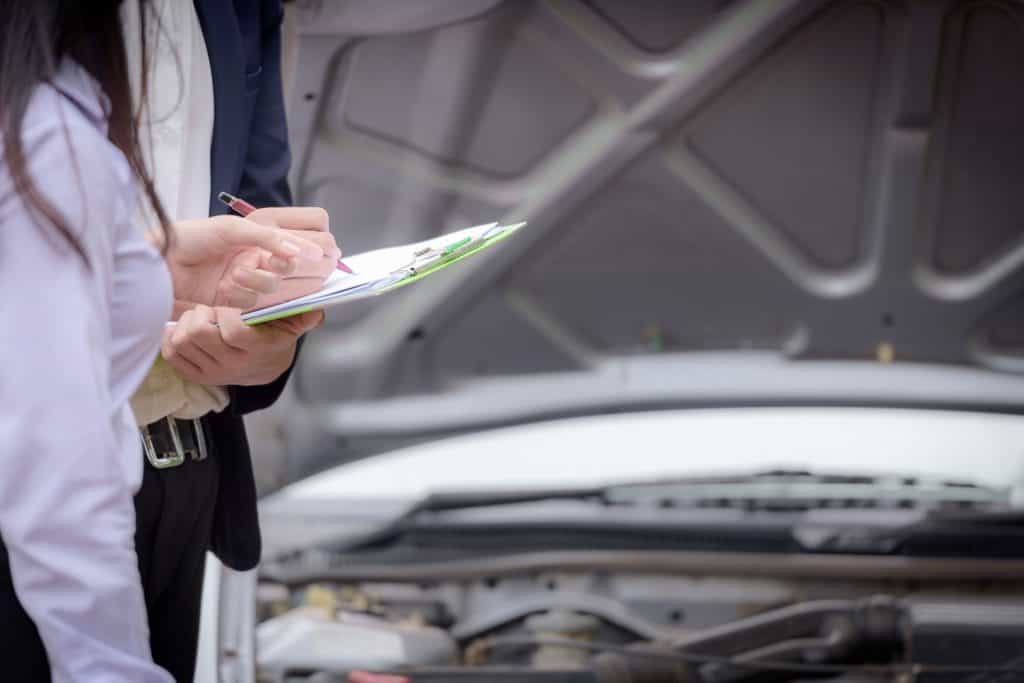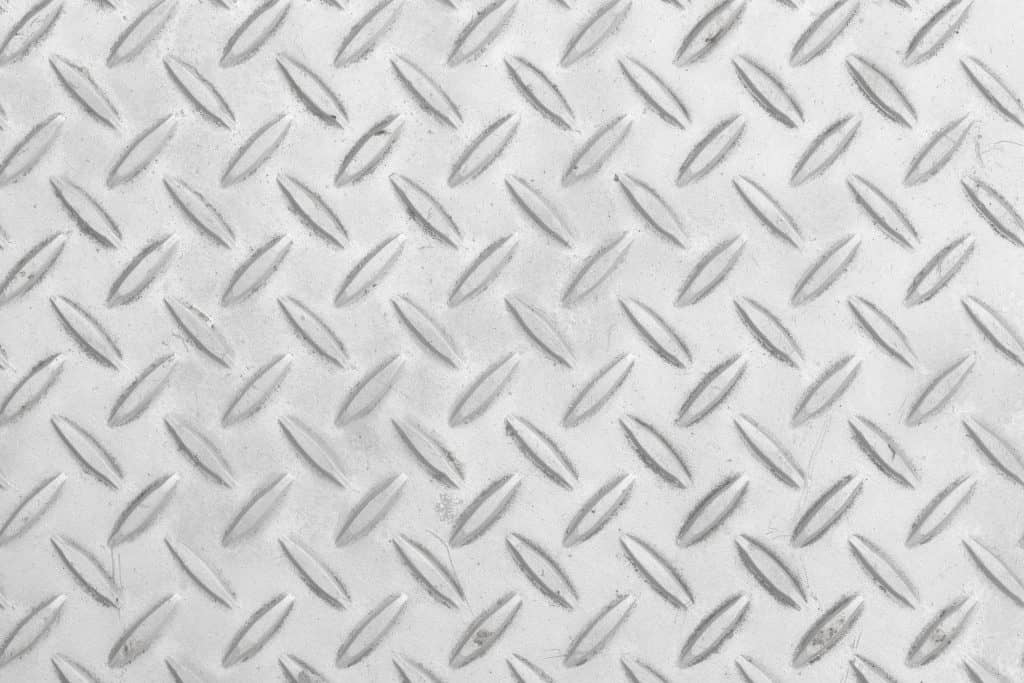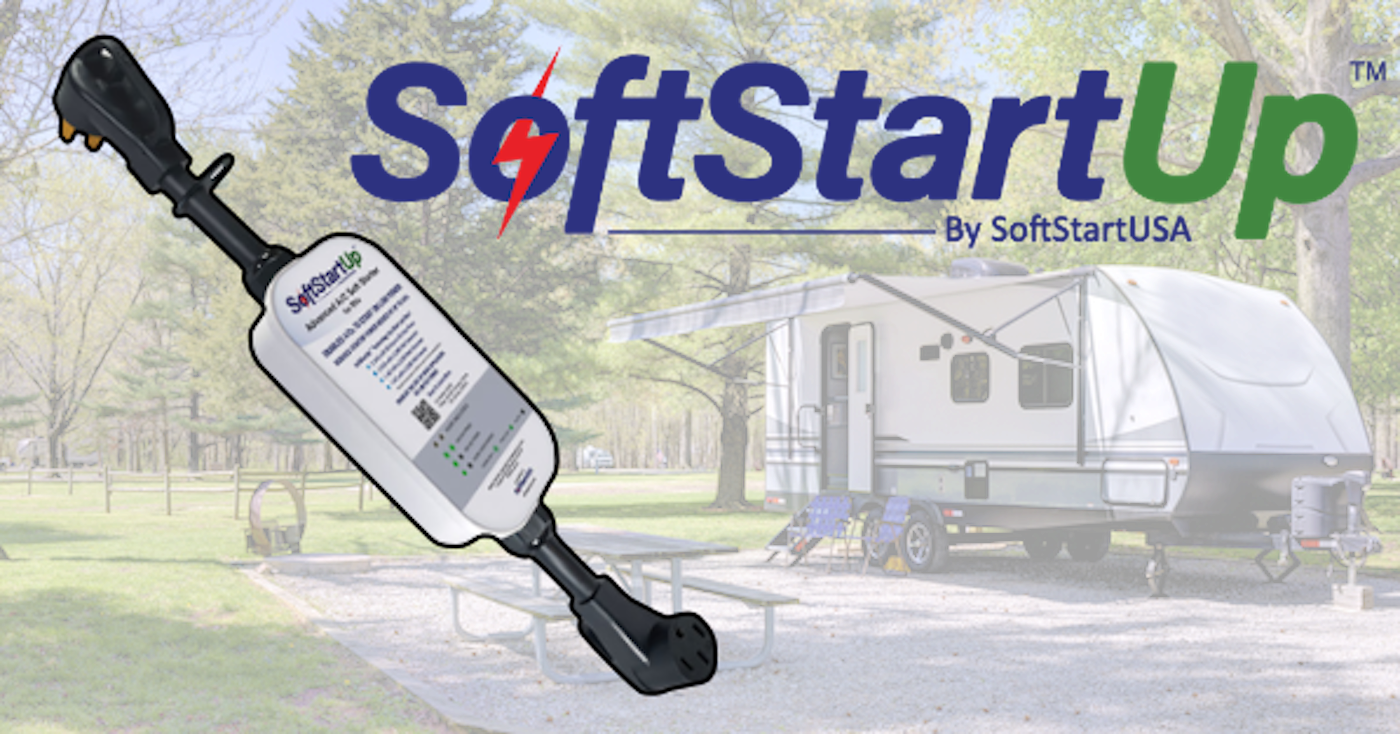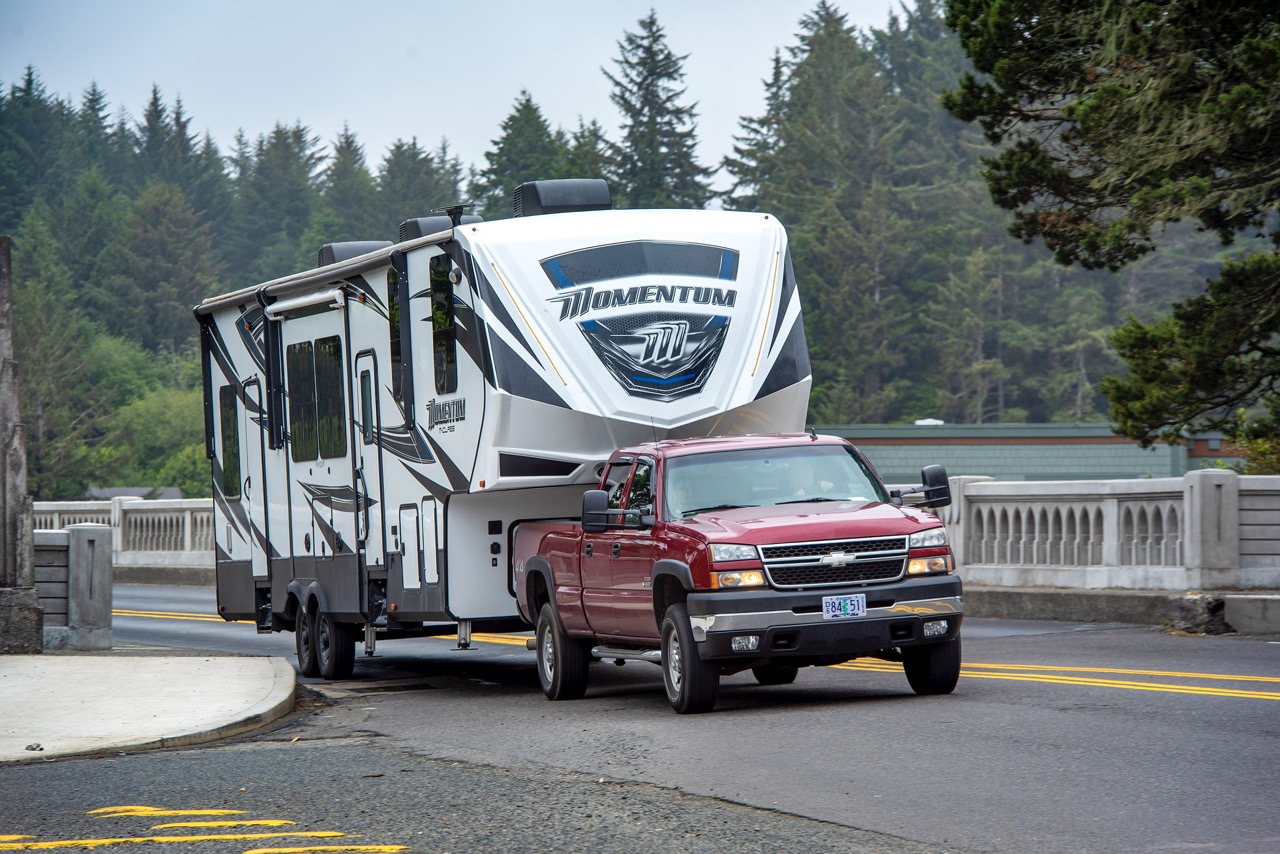
When you’re out traveling the country in your trailer, a little bit of road damage is pretty much unavoidable. Not all roads are well maintained, and you never know when you’re going to get a little scratch or drive over a bad pothole.
One common problem for drivers is vehicle damage from loose rocks and gravel. These can scuff up the bottom and front of your vehicle whether it’s a car or a travel trailer. While it’s pretty much impossible to avoid this situation entirely, there are things that you can do to avoid damaging your trailer when you’re on the road!
To keep your trailer in good condition on the road, you need to follow safety measures when driving, such as maintaining a safe distance and speed. There are also products available that can wrap around the front of your trailer, or attach to the connecting hitch to block any debris.
If you follow safe driving practices and get some level of protection for your trailer, you shouldn’t have to worry too much about rock damage. It’s easy to make a mistake on the road, but these precautions help to protect you and your vehicles!
Good Driving Practices for Avoiding Rock Damage
The first step to preventing vehicle damage is to be a safe driver! If you’re an experienced driver and own a travel trailer, there’s a pretty good chance that you already know how to handle yourself on the road. However, reckless driving can sometimes get the best of us, so let’s review some basic safety measures before getting into the fancy add ons!
Road Quality
First off, you need to be careful about what kind of roads you drive on. Trailers aren’t generally meant for off-roading and taking them down unpaved and gravelly roads can be a very bad idea.
If the road is muddy or uneven, it’s all too easy for your trailer to get stuck or tip over. Rocks are the least of your problems in these circumstances! In addition, poorly maintained roads often have loose gravel that can easily scratch your lovely trailer.
Stick to maintained roads as often as you can. If you do need to go down rougher roads from time to time, take it slow. No matter how excited to are to get to your destination, don’t risk damage to your car or trailer.
Following Distance
Second, you always need to maintain a decent following distance from other vehicles when you’re out on the highway. One of the biggest sources of rock damage comes from following a car or semi truck too closely. These can easily kick up dust, gravel, and rocks that you’re too close to avoid.
It’s also just a good idea to avoid tailgating anyway. You’re in a large and heavy vehicle, so it’s going to be hard to stop if you’re too close behind.
When you’re driving above 40 mph it’s generally a good rule of thumb to follow vehicles at least 100 feet back. If you can manage it, 200 feet actually ideal. But obviously, the highway is an unpredictable place and people can sometimes merge too close in front of you.
As frustrating as it might be when this happens, try to fight the road rage and slow down a bit to create more distance between the two. (If they cut you off a little too closely though, feel free to really lay on that horn and let them know that that’s not okay!)
Speed Limits
And finally, make sure that you’re staying within the right speed limits for your stretch of highway. Trailers and heavy vehicles are often urged to travel 10 to 15 miles below the maximum speed limit for safety reasons. This isn’t just a good idea. It can be a lifesaving one, both for you and your trailer!
Driving well below the speed limit helps you to avoid rock damage because it gives you more time to react to obstacles and bad conditions. You’ll be able to spot a piece of debris in the road much easier if you’re going slower, and it will be much easier to avoid it.
Swerving at the last minute to dodge a rock or tire scrap is dangerous for you and everyone around you.
This is especially important during periods of bad visibility. Driving through a dust storm, rain, and snow make it harder to see, and thus, harder to avoid debris.
In addition, it’s easier to avoid damage when you’re not passing people as often. As I mentioned earlier, other cars around you might accidentally fling rocks and gravel at any moment. If you’re side by side with them when this happens, it’s all too likely that you’ll get a few nicks and scratches.
Slowing down and avoiding the urge to pass people can be tricky. Believe me, I know how good it feels to get ahead of someone on the road! But for the safety of you, your fellow drivers, and your vehicle, do your best to follow the suggested speed limits.
Mudflaps

Now that we’ve covered the driving basics, let’s look into what you can do to minimize damage to your trailer!
One of the best options available are mudflaps! If you’ve ever looked at a semi truck when you drove past it, you’ve probably noticed the large flaps that sit behind every set of wheels.
These protect the wheels and undercarriage of the vehicle, and they also slow down any debris that filters through them. Essentially, they act as cushions for any rocks and gravel that tries to get through!
These work best for people who drive large tow vehicles such as trucks. The main drawback to using mudflaps is that they make your vehicle a bit less aerodynamic. If might take a little more energy for you to get where you’re going. However, don’t discount them because of this!
A wide variety of mudflaps have been created. There are types that you can either install them permanently behind the rear wheels, as well as types that can be removed when they’re not needed. This helps reduce drag and makes your car more fuel efficient.
One of the best options for trailer owners is the Rock Tamers from Amazon. They are large mudflaps that can easily be taken on and off a truck. They can fit a wide range of vehicles from small to large and their width is adjustable to account for any size.
They’re also designed to fit over the frame of standard ball hitches, which makes them perfect for trailer owners. They provide a great level of protection for your trailer, are easy to remove, and keep your hitch free!
This is just one example of the great mudflaps that are available. They’re a pretty cheap option, are easy to install, and are effective at preventing vehicle damage.
Trailer Hitch Shields
If you’re looking for some protection beyond the wheels, then you might also want to look into a trailer hitch shield.
These are sturdy fans of material that attach to the connecting hitch between a travel trailer and its respective tow vehicle. They’re great for all kinds of tow attachments, including boats, trailers, and storage units.
Hitch shields are light and easy to pack around. When you don’t want to use them, it’s a simple process to remove them and pack them away. Obviously, they’re also built to stand up to flying rocks and road debris, so they’re pretty sturdy. It wouldn’t be much of a shield if it couldn’t take a few hits!
One of the best trailer shields on the market is the Caliber 13404 13404 V-Front Ramp Shield. This is a hardy product that provides a wide cushion of protection for your trailer.
It sports a universal design that is adaptable to a wide range of trailers. It’s also designed to angle outward from a central point, creating a more aerodynamic shape that blocks debris while not slowing down your vehicle. The Caliber Front Ramp Shield is also made with the sturdiest materials, making it extremely durable.
It’s going to take a lot of effort and time to chip, crack, or damage this shield!
Another great option is the Bow Buddy. This shield is designed to protect boats, trailers, and anything else you want to tow. It’s simple, compact, and easy to use!
The Bow Buddy is easy to install on trailer hitches and has a light and portable design. It only weighs 22 pounds altogether, but it provides cutting edge protection! Its shape is angled to create the smoothest airflow possible and its constructed with a sturdy mesh design. This makes it easy to drive with while creating a firm net to deflect rocks and debris.
It has a simple installation process as well, featuring a quick bolt attachment that only requires a couple of minutes of work. And, as a fun bonus, the Bow Buddy comes in a variety of colors! If you’ve got a unifying color them between your tow vehicle and trailer, you can use your shield to match it.
Protective Layers for Trailers

Mudflaps are great products for your tow vehicle and hitch shield are great for the area in between your car and trailer. But if you’re looking for a firm layer of protection for your trailer itself, then diamond plate protection is the thing for you!
When I first heard the phrase “Diamond Plating” I was immediately worried about the cost. For a minute, I thought that they meant that the protective layer would actually be made of diamonds, and I couldn’t imagine anyone but a billionaire designing that product.
If you thought the same thing as me, don’t worry. This option isn’t made of diamonds and is much more affordable than you think. These protective layers are actually made from aluminum and the “diamonds” refer to a diamond-shaped pattern that runs along the length of the metal. This gives them better durability as well as a neat looking design!
There are two main types of diamond plating that are useful for trailers. One type is diamond plate fender covers and the other is diamond plate trailer trim.
Diamond plate fender covers are curved sheets of metal that arc over the wheel wells of your trailer. Since the wheel wells are often the parts of the trailer that stick out the furthest, this protects the areas that are the most exposed to the elements.
These sheets of metal are sturdy and strong. They can take much more damage than the original material of your trailer and they are very difficult to scuff or break.
The Tie-Down Engineering 44836 Aluminum Tread Brite Fender is a great option for you if you’re interested in buying a fender cover. It’s strong, long-lasting, and easy to install.
For those of you who are more interested in protecting the front of your trailer from damage, the diamond plate trailer trim is the option for you!
These are large sheets of metal that attach to the front of your trailer. If you order them specifically for your model then they can come tailor-made to fit it. (I would recommend doing this for the best results).
This trim usually extends a couple of feet up the front of your trailer, wrapping around it securely. This is essentially armor for your trailer, which can take heavier hits than the material it’s protecting. It’s also easier to polish out scuffs and dings from the plating than the trailer, making it easy to maintain.
You’ll be looking sharp for a long time with this option!
You can order individual sheets of diamond plating to attach yourself, or you can order custom trim that is meant specifically for your vehicle. The latter will be more expensive, but it will provide great protection for a long time.
If you’re interested in just the plating itself, check out these Aluminum Diamond Plate Sheets. They’re pretty cheap and you’ll be able to see for yourself how tough they are.
If you want to provide the ultimate protection for your trailer, you can also buy both the fender plates and the trailer trim. This will provide a layer of safety in multiple areas and keep your vehicle in prime condition!
Repairing Rock Damage in Trailers
Now, even with these products, sometimes mistakes will still happen. A road is an unpredictable place and you never know when a rock might create a ding in your trailer.
If you’re in a position where you need to repair damage to the surface of your trailer, there’s help for you too! If it’s a serious problem, the best option is always to take your trailer into an expert auto body shop. Sometimes, despite our best intentions, our efforts to fix dings and dents just make it worse.
That being said, there are a lot of DIY methods you can try at home, such as using plungers and compressed air to pop a dent back into place (Although this only works with trailers made of aluminum).
Below is a good video that shows you how you can remove dents from trailers. The video is directly applied to hail damage, but the process is pretty much the same for rock chips too. As I said, it’s not always easy to do it yourself, but it’s good to know the process of how to repair damage when it happens.
Trailers are made of tough stuff, but even they can get beat up by rough roads. Take some precautions to protect them by driving safely and think about buying a couple of the products mentioned above. They can go a long way to preventing damage and maintaining the value of your travel trailer.




I would like to diamond plate the front of my fifth wheel. How can I apply to fit properly?